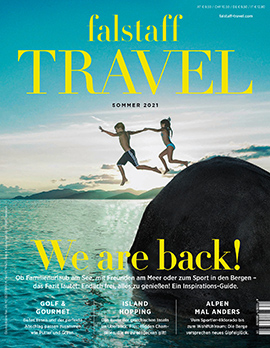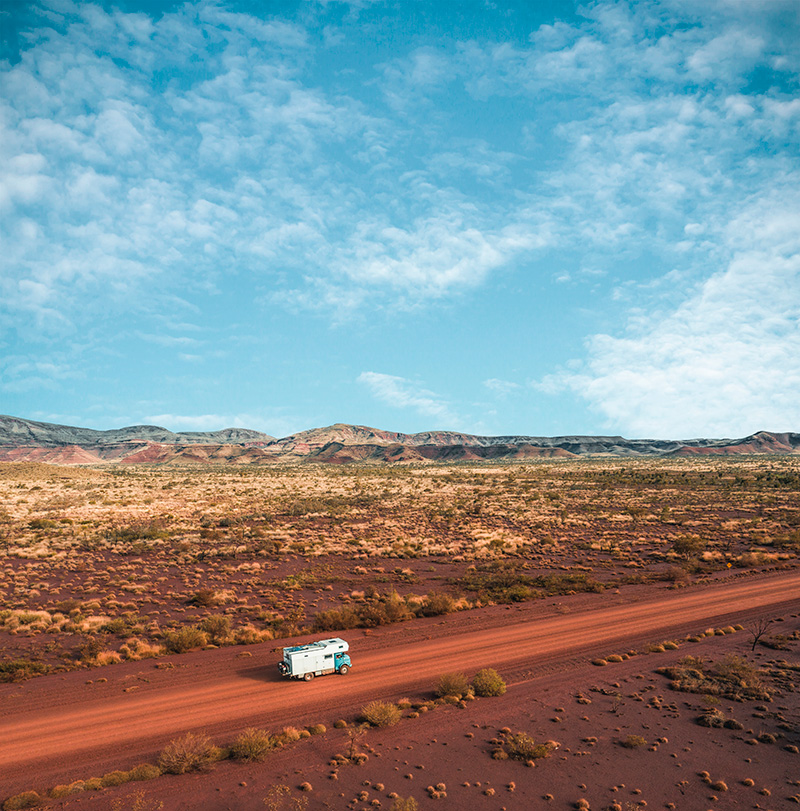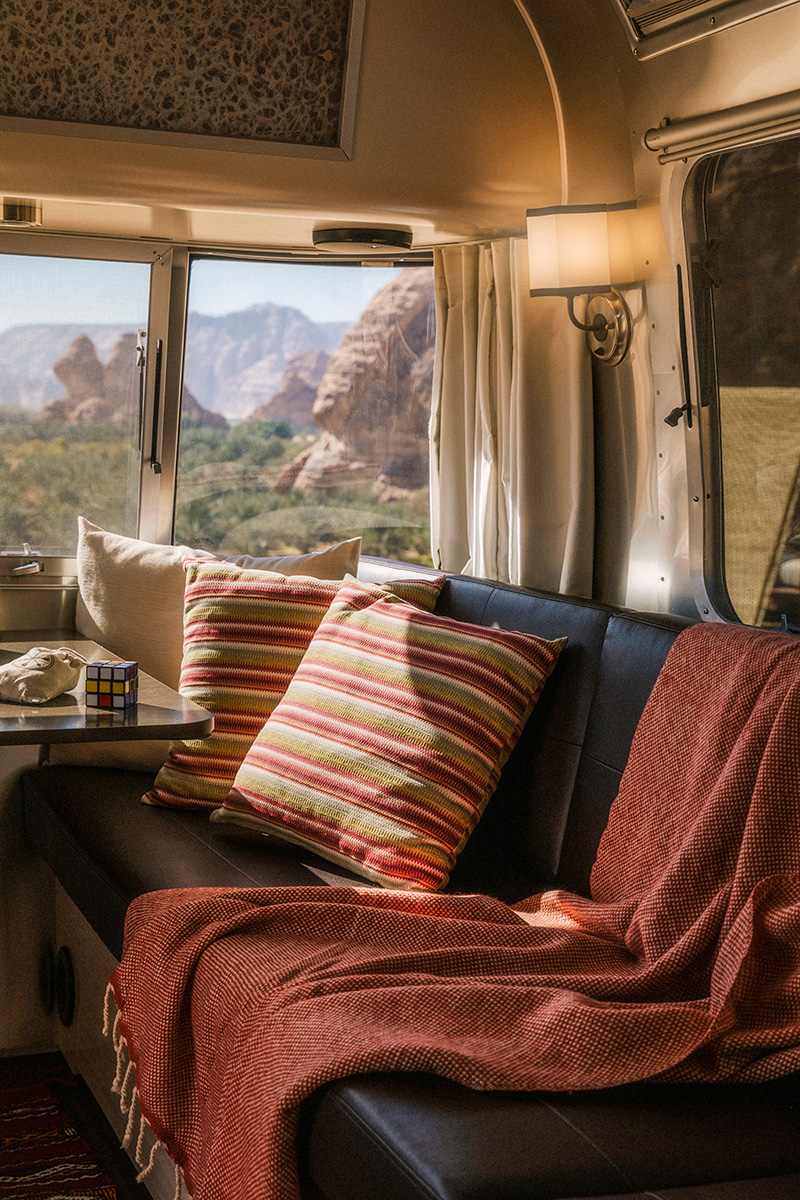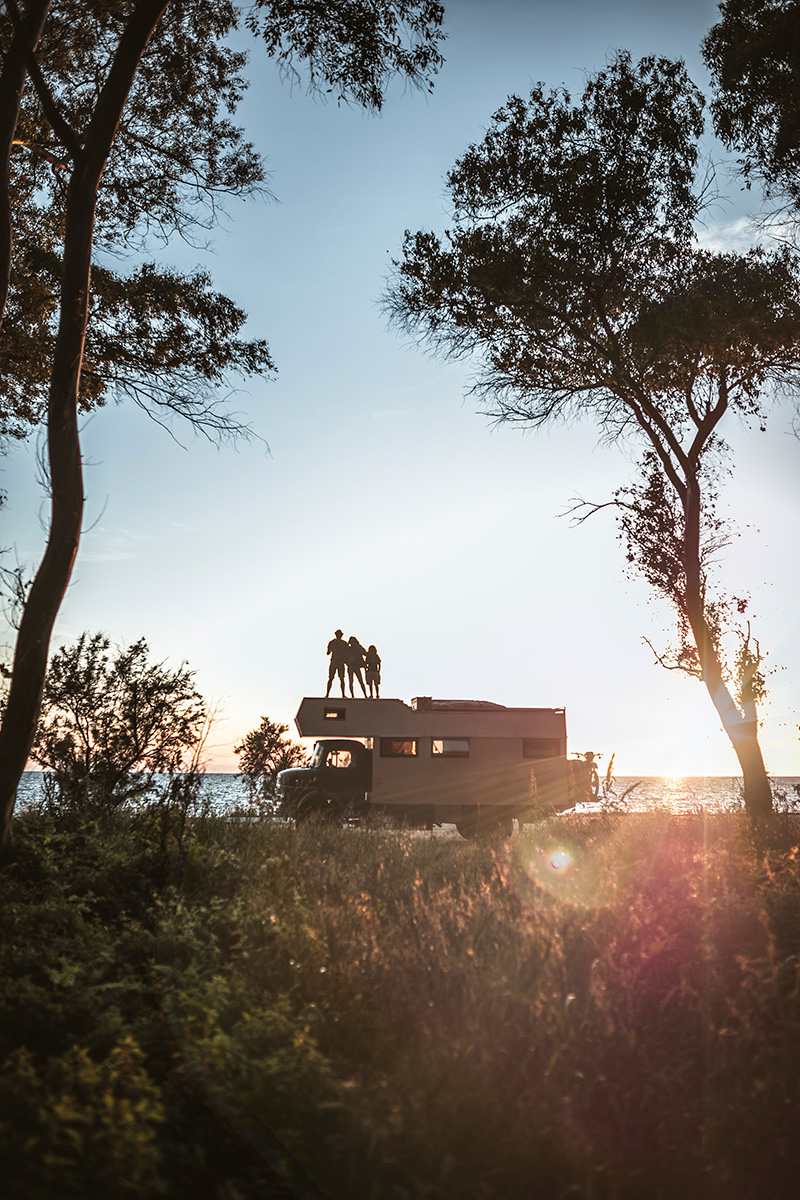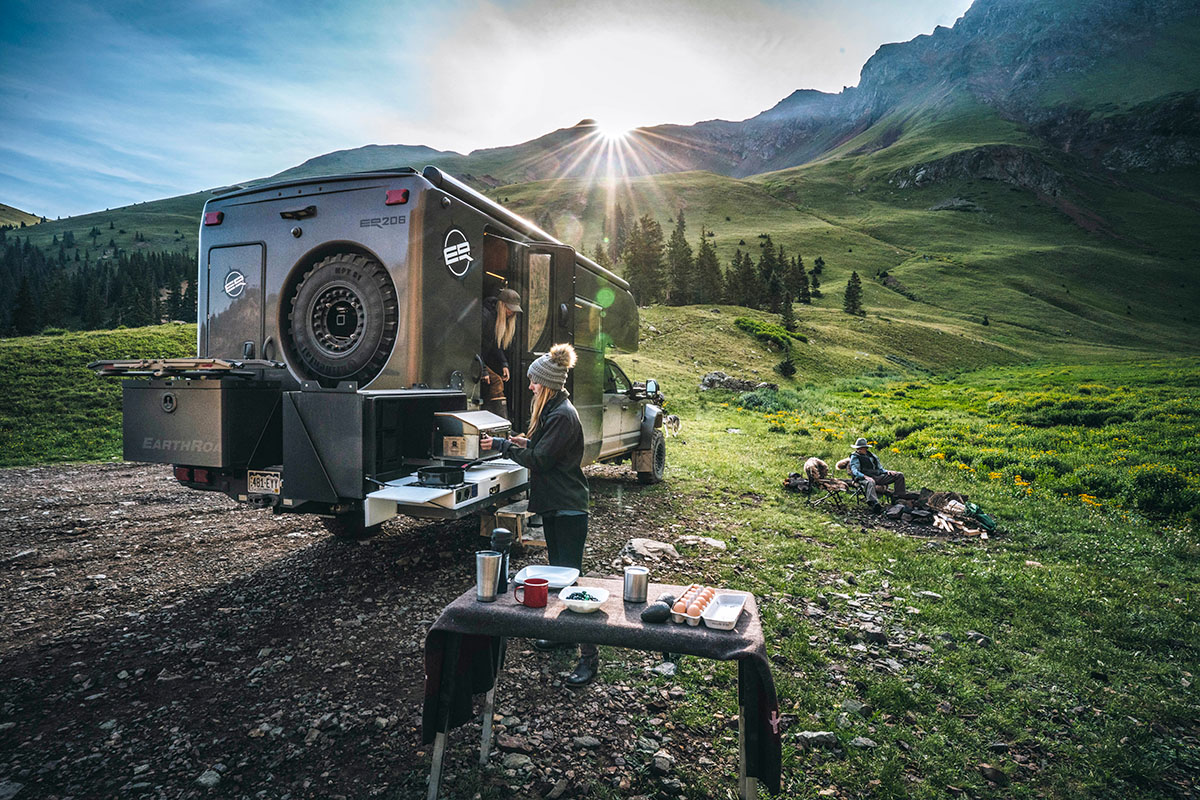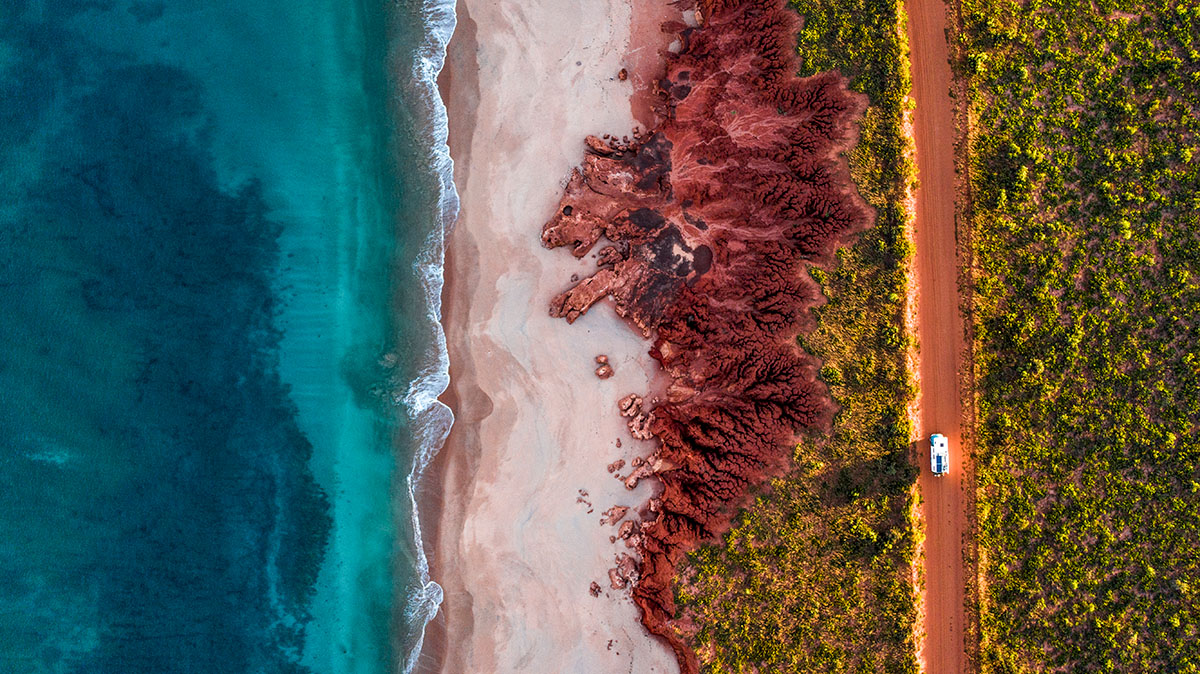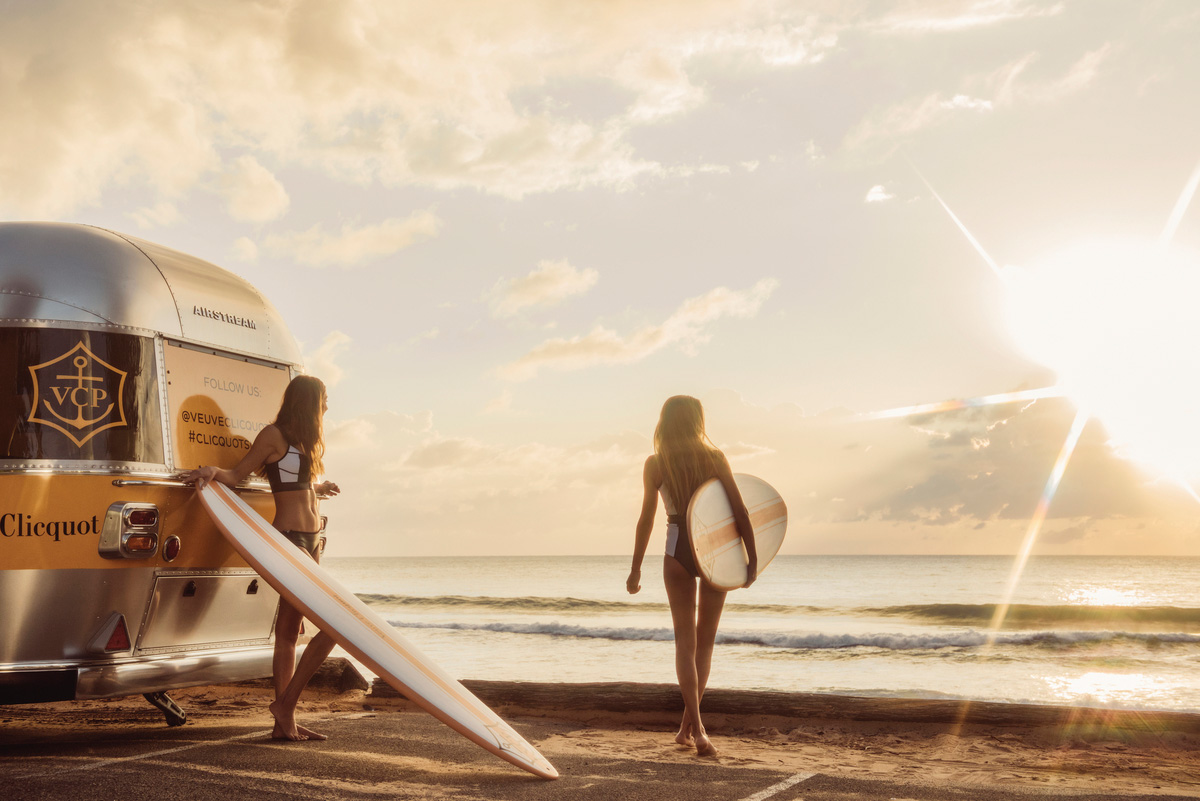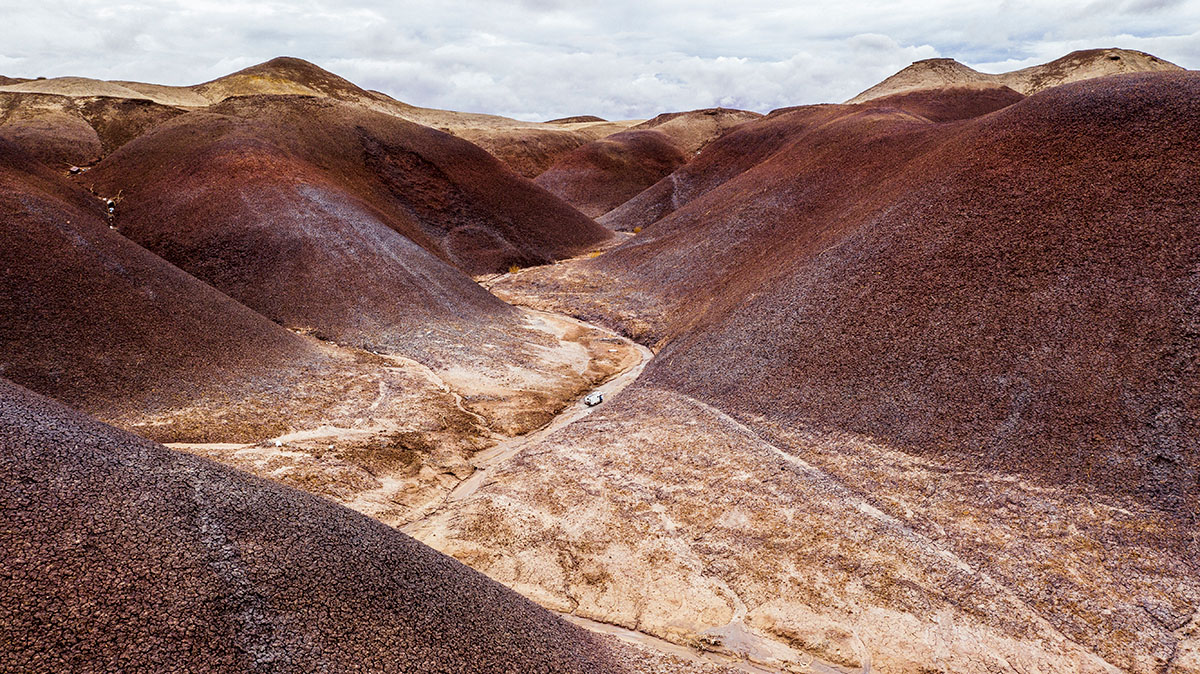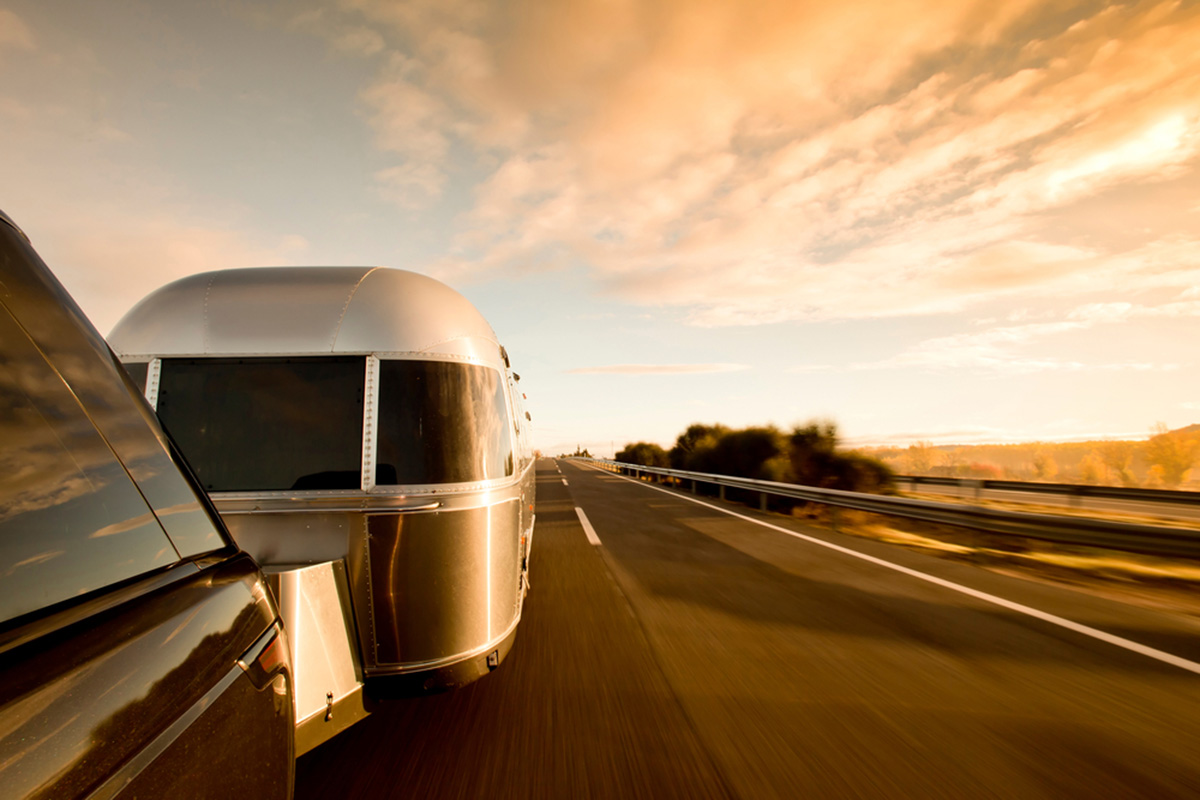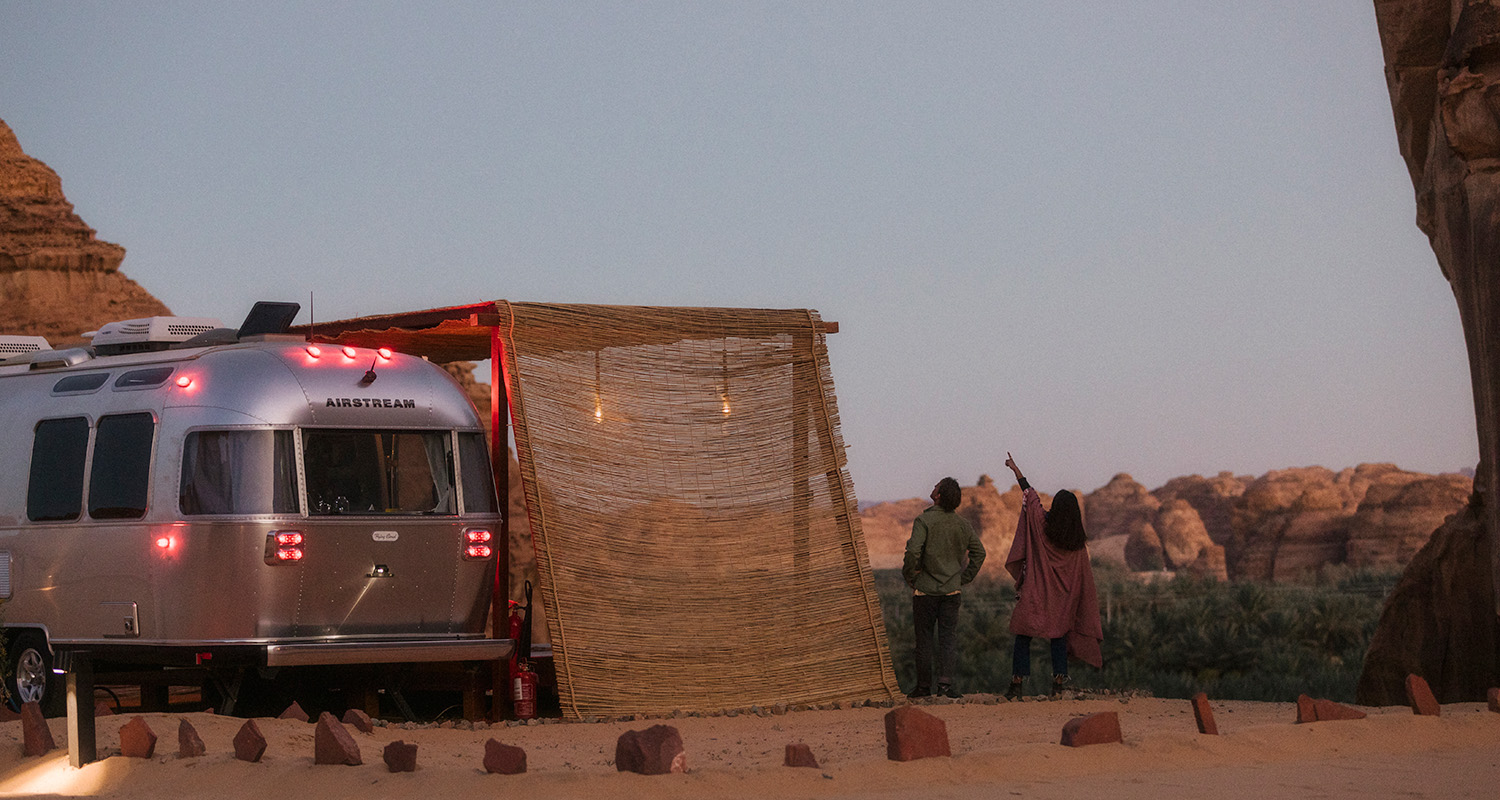
Trend Watch Van Life: Vacation in a Motorhome
#vanlife: why we travel by motorhome again now.
July 7, 2023
14.3 million posts on Instagram can't lie: #vanlife is more than a short-lived trend that has caught on with millennials. Being on the road in a camper van has a long tradition that began before motorization. Johann Wolfgang von Goethe was already a camper - for his trips to Italy, he had a carriage converted with a bed and reading lamp. He also had a wooden secretary for notes and a small stove.
© Stocksy
Then, in 1931, the first official motor home came into being - and it was thanks to a woman. The painter Fridel Dethleffs-Edelmann from the Allgäu region wanted her husband to have a car so that she could accompany him on business trips. Her so-called living car had three sleeping berths and also served as a mobile studio (including a washing machine). Orders from customers soon began to trickle in, and the practical and family-friendly vehicle went into series production in a modified form.
From the 1950s, camping on wheels became synonymous with freedom. The era of the economic miracle fueled wanderlust, and a vacation by the sea was the highlight of the year for many. With a caravan, you were independent - back then there was no Internet, hotel bookings were a gamble from today's perspective. With a camper, you knew what you had: your own little kingdom on four wheels.
Hippie lifestyle
© provided
In the 1970s, the VW bus became the symbol of an entire era. The hippies painted it with Nuclear power? No, thanks! slogans. There were no limits to creativity. Through the flower power movement, the functional vehicle became an individual, creative and political statement. Born to be free: the new attitude towards life was to be expressed in clothing, hairstyle, but also in leisure and travel behavior. Closeness to nature, independence and a touch of romance - rolling weekend homes combined all of this.
The campsite was upgraded: now there were extended sanitary facilities and electricity. In the course of this development, however, the great dream of freedom became an allotment garden idyll in many places: among like-minded people, sausages were grilled just like at home. For younger people, the mobile home became a symbol of a life stuck in a rut.
Nature as a source of energy
From the 1990s, camping and hiking were absolutely out. Generation Rave had nothing to do with the stuffy RV vacations of their parents. Why #vanlife is now once again the dream of many Millennials has not only to do with the pandemic; deceleration has been in vogue again for some time. Nature has been rediscovered as a source of energy, and travel is becoming increasingly individualized. Young people in particular have no desire for mass tourism; they want to travel longer, but also more flexibly. Monotonous office life was out of fashion. Digital nomads work wherever they like.
© Stocksy
Never before has our planet been so well connected and accessible - Google Maps shows even the most remote corners. If you want, you can book a week in South Korea or herd reindeer in northern Norway at the touch of a button. Travelers don't want well-trodden paths, they want to experience something special and create memories for eternity. The modern version of the motorhome stands for an easy-rider feeling: you sleep where you feel like it - and there's a good view. The traveling micro house combines comfort and adventure. You feel free, but thanks to the wireless network you are connected to the world almost everywhere. #vanlife means getting out into nature, but with a safety net.
The journey is the reward
© provided
For many who travel in a camper van and document it on social media, it's more than a vacation. It's a way of life. They want to break out of the hamster wheel of their jobs and decide from day to day where to go. The journey is the destination. They want to get to know foreign cultures and countries as authentically as possible, to get back to the basics - even though many caravans have long since become high-end mobiles.
The Furrion company, for example, has taken camping to a new level: their luxury van Elysium, which never went into production, has a steam bath, whirlpool and even a helipad with an integrated helicopter on the roof. But even so, many vans are becoming more and more like Tiny Houses. Small but mighty - with air conditioning, a shower, an oven, a wine fridge, a sleeping area with a view of the stars, a perfect sound system and touchscreens. For many #vanlife is to equip their own caravan individually; after all, luxury means something different for everyone.
© Stocksy
The figures speak for themselves: between 2015 and 2020, new registrations of caravans in Germany rose by 50 percent, while in Switzerland there was an increase of 26 percent in 2020. In Austria, campsites recorded an increase of six percent in 2021 compared to the previous year. Carinthia is the most sought-after camping region; registrations of mobile homes and caravans increased by six percent.
Buying a van is expensive. To try out the adventure of having your own four walls on wheels, renting is a common option. The company Paul Camper, for example, works on the Airbnb principle - you rent a car from a private individual. Indie Campers operates in 70 locations in Europe, you can drop off the camper in a different country than where you started. Roadsurfer in California, on the other hand, specializes in iconic VW Campervans, but also operates in Europe.
Surfing included
© Matt Howell
There are many professional vanlifers on Instagram giving practical tips, but travel guides have also tuned in to the new clientele. Lonely Planet 2021, for example, has published its own guide for Legendary Road Trips. Highway 101 in California is ideal for anyone who wants to experience the American Dream, while Scotland fans appreciate the North Coast 500 through the highlands (bear in mind though, that it can rain here for days on end). Namibia is also a good place to travel in a motorhome - but good planning is essential to avoid getting stranded somewhere in the desert. If you like it cooler, Canada should be on your radar: the Icefields Parkway is a panoramic road that leads from waterfalls to imposing glaciers. And something that's brand new: in Saudi Arabia, you can spend the night in Al-Ula amid fascinating sandstone; the sky over the desert is incredible.
© provided
Breakfast in the vineyard
Apps are indispensable if you're going on an RV trip and want to camp wildly without making yourself unpopular with the locals: Trampled fields or blocked paths make work difficult for farmers. You should also keep the respect for the environment in mind. That doesn't just mean not leaving trash behind or not setting fires anywhere that can cause forest fires. It also includes shower gel made from natural ingredients and degradable laundry detergent.
© provided
iOverlander is a community-driven app that not only lets you find pitches, but also where water refill stations and e-charging stations are; the website womo-stellplatz.eu is limited to Europe, nomady.ch shows the most beautiful nature pitches - and the German site Alpaca Camping also lists which wineries, farms or private individuals are open to vans. Many also offer hearty breakfasts. This helps everyone: the adventurers and the local residents, who no longer have to clean up the trash of careless self-caterers.
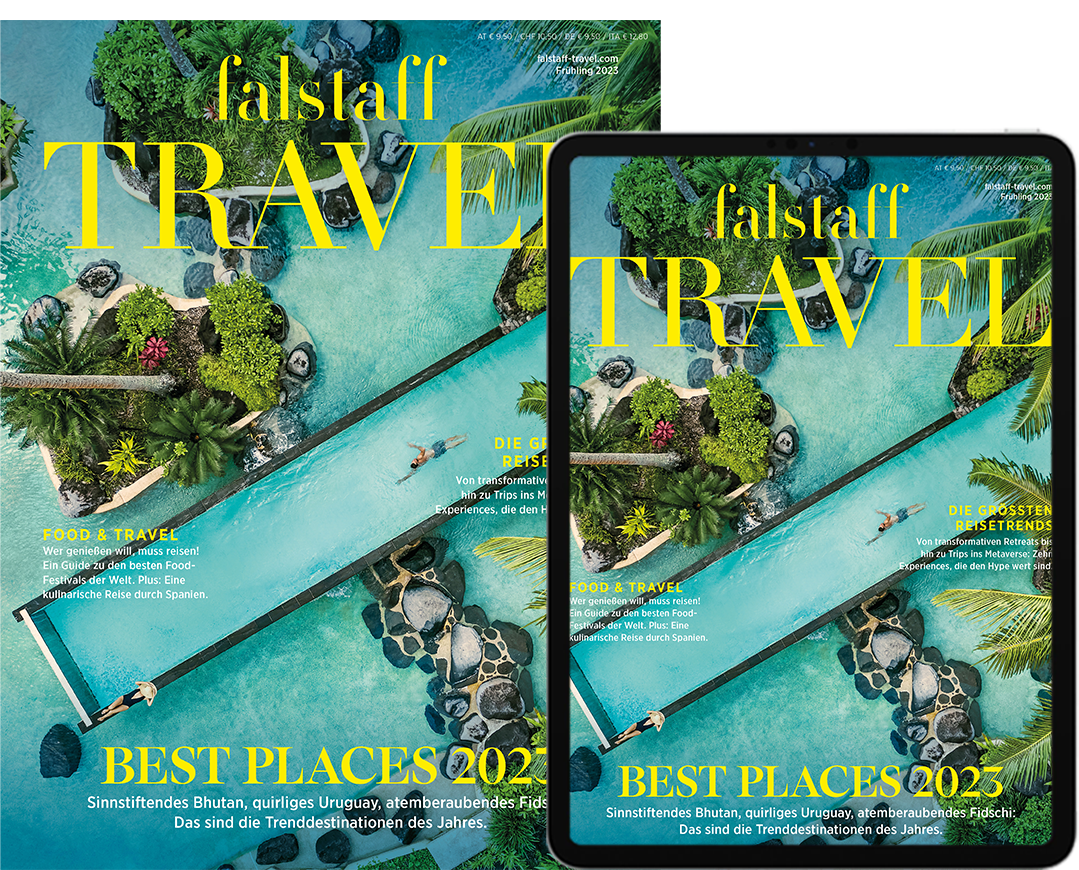
This article appeared in the Falstaff TRAVEL issue Spring 2023.
